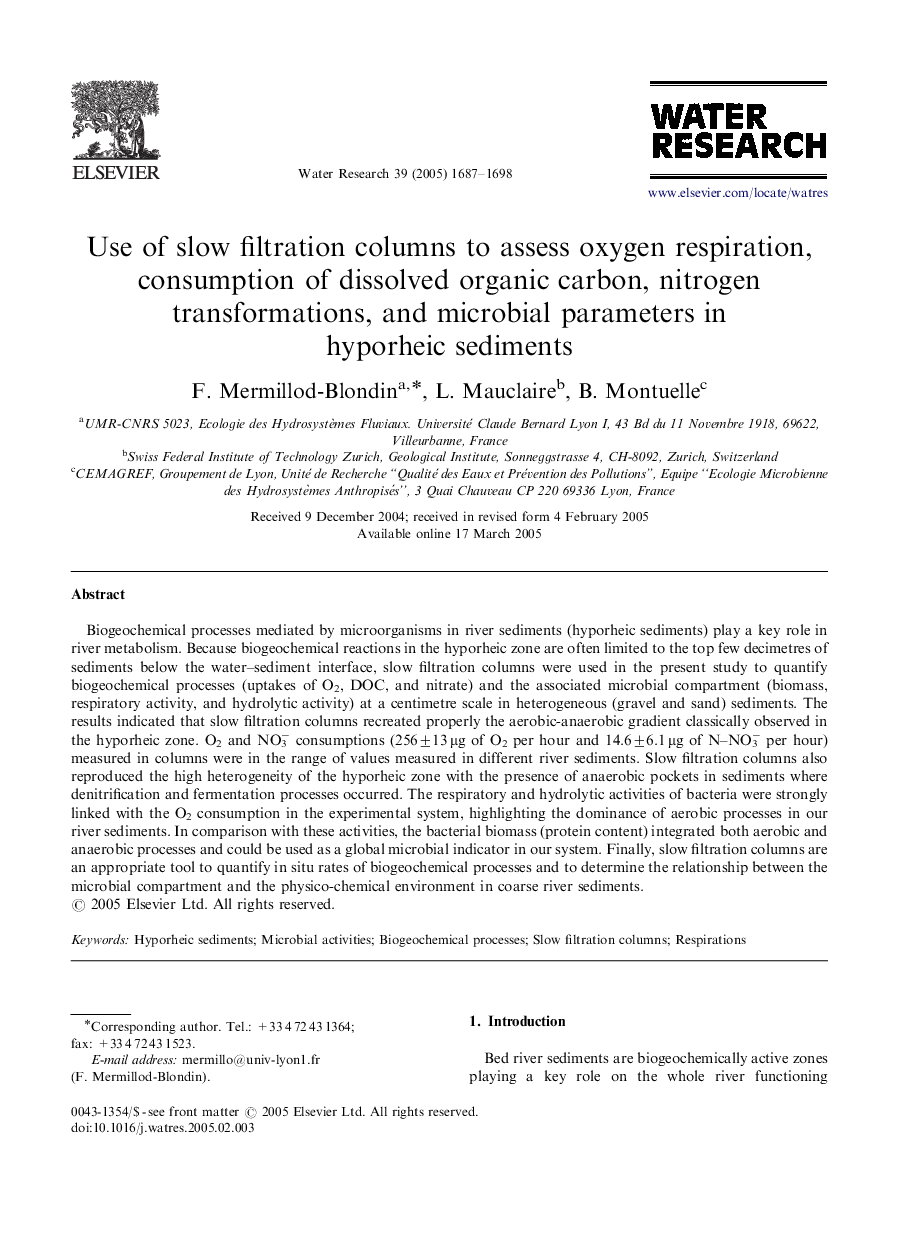| Article ID | Journal | Published Year | Pages | File Type |
|---|---|---|---|---|
| 9468056 | Water Research | 2005 | 12 Pages |
Abstract
Biogeochemical processes mediated by microorganisms in river sediments (hyporheic sediments) play a key role in river metabolism. Because biogeochemical reactions in the hyporheic zone are often limited to the top few decimetres of sediments below the water-sediment interface, slow filtration columns were used in the present study to quantify biogeochemical processes (uptakes of O2, DOC, and nitrate) and the associated microbial compartment (biomass, respiratory activity, and hydrolytic activity) at a centimetre scale in heterogeneous (gravel and sand) sediments. The results indicated that slow filtration columns recreated properly the aerobic-anaerobic gradient classically observed in the hyporheic zone. O2 and NO3â consumptions (256±13 μg of O2 per hour and 14.6±6.1 μg of N-NO3â per hour) measured in columns were in the range of values measured in different river sediments. Slow filtration columns also reproduced the high heterogeneity of the hyporheic zone with the presence of anaerobic pockets in sediments where denitrification and fermentation processes occurred. The respiratory and hydrolytic activities of bacteria were strongly linked with the O2 consumption in the experimental system, highlighting the dominance of aerobic processes in our river sediments. In comparison with these activities, the bacterial biomass (protein content) integrated both aerobic and anaerobic processes and could be used as a global microbial indicator in our system. Finally, slow filtration columns are an appropriate tool to quantify in situ rates of biogeochemical processes and to determine the relationship between the microbial compartment and the physico-chemical environment in coarse river sediments.
Related Topics
Physical Sciences and Engineering
Earth and Planetary Sciences
Earth-Surface Processes
Authors
F. Mermillod-Blondin, L. Mauclaire, B. Montuelle,
